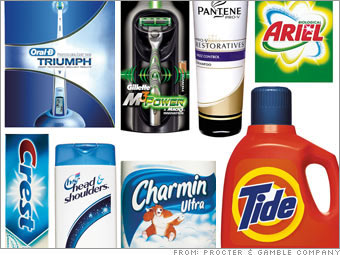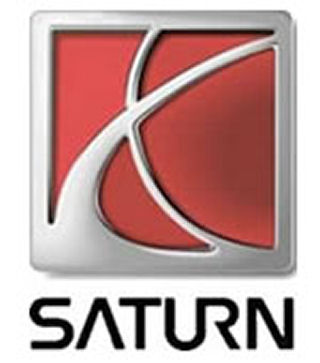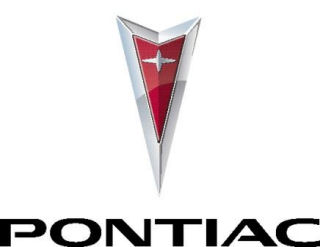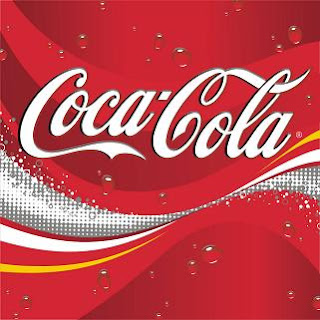Over the past 20 years, I have talked to a few hundred business owners about the marketing and management of their businesses.
There are certain common traits of the most successful, whether it is a transmission shop, dentist, book store, university, or nearly any business. A strong brand is essential.
Check out this list:
The Top 10 Traits of Strong Brands
Here is the result of some reading on Marketing. We have started with Marketing Mix and had done the topic Product. It was required by our Lecturer to do some reading on Brand Equity. Looking for some articles out there in the information super highway, I found this one easy to read and understand.
Ref: Harvard Business Review on Marketing; Top ten brands in the World
Review: Brand Report Card by Kevin Lane Keller
To give managers a systematic way to think about their brands, Tuck School Professor Kevin Lane Keller lays out the ten characteristics that the strongest brands share.
The world's strongest top ten brands share the following attributes:
1. The brand excels at delivering the benefits customers truly desire

Consider Starbucks. The company began to focus its efforts on building a coffee bar culture. It maintained control over the coffee from start to finish - from the selection and procurement of the beans to their roasting and blending to their ultimate consumption. Starbucks locations have thus have been successfully delivered superior benefits to customers by appealing to all five senses - through the enticing aroma of beans, the rich taste of the coffee, the product displays and the attractive artwork adorning the walls, the contemporary music playing in the background and even the cozy feel of the tables and chairs.
2. The brand stays relevant
Strong brands are tied to the actual quality of the products/service and to various intangible factors. Those intangibles include: user imagery - the type of person who uses the brand, the type of situations in which the brand is used, the type of personality the brand portrays etc.

Gillette, pours millions of dollars into R&D to ensure that its razor blades are as technologically advanced as possible, calling advances through subbrands (Trac II, Atra, Sensor, Mach3) and signaling minor improvements with modifiers (Altra Plus, SensorExcel). At the same time, Gillette has created a consistent, intangible sense of product superiority with its long-running ads, "The best a man can get".
3. The pricing strategy is based on consumers' perceptions of value
The right blend of product quality, design, features and costs and prices is very difficult to achieve but well worth the effort.


With its well-known shift to an "everyday low pricing (EDLP)" strategy, Procter & Gamble did successfully align its prices with consumer perceptions of its products' value while maintaining acceptable profit levels.
4. The brand is properly positioned
Brands that are well positioned occupy particular niches in consumers' minds. They are similar to and different from competing brands in certain reliably identifiable ways.

Visa is an example whose managers understand the positioning game. In the 1970s and 1980s, American Express maintained the high-profile brand in the credit card market through a series of highly effective marketing programs. Trumpeting that "membership" has its privileges, American Express came to signify status, prestige and quality.
In response, Visa introduced the Gold and Platinum cards and launched an aggressive marketing campaign to build up the status of its cards to match the American Express cards. Visa became the consumer card of choice for family and personal shopping, for personal travel and entertainment and even for international travel, a former American Express stronghold.
5. The brand is consistent
Maintaining a strong brand means striking the right balance between a continuity in marketing activities and the kind of change needed to stay relevant. Continuity means the brand's image does not get muddled or lost in a cacophony of marketing efforts that confuse customers by sending conflicting messages.
In the 1970s Michelob ran ads featuring successful young professionals that confidently proclaimed "When you are going, it's Michelob". The company's next ad campaign trumpeted "Weekends are made for Michelob". In the mid-1980s, managers launched a campaign telling consumers that "The night belongs to Michelob". Then in 1994 we were told, "Some days are better than others," which went on to explain that "A special day requires a special beer". The slogan was subsequently changed to "Some days were made for Michelob."
After receiving so many different messages, consumers could hardly be blamed if they had no idea when they were supposed to drink the beer. Predictably sales suffered.
6. The brand portfolio and hierarchy makes sense.
Most companies do not have only one brand; they create and maintain different brands for different market segments. This philosophy led to the creation of Cadillac, Oldsmobile, Buick, Pontiac and Chevrolet divisions. The ideas was that each division would appeal to a unique market segment on the basis of price, product design, user imagery and so forth.




Chevrolet has been positioned as the value-priced, entry-level brand. Saturn represent no-haggle, customer-oriented service. Pontiac is meant to be the sporty, performance-oriented brand for young people. Oldsmobile is the brand for larger, medium-priced cars.
7. The brand makes use of and coordinates a full repertoire of marketing activities to build equity.
A brand is made up of all the marketing elements that can be trademarked - logos, symbols, slogans, packaging, signage and so on. Strong brands mix and match these elements to perform a number of brand-related functions, such as enhancing or re-enforcing consumer awareness of the brand or its image and helping the product to protect the brand both competitively and legally.

Coca-Cola makes excellent use of many kinds of marketing activities. These include media advertising campaign, promotions ans sponsorship. They also include direct response and interactive media. Through it all, the company always reinforces its key values of "originality" , "classic refreshment" and so on.
8. The brand's managers understand what the brand means to consumers.
Managers of strong brands appreciate the totality of their brand's image - that is, all the different perceptions, beliefs, attitudes and behaviors customers associate with their brand, whether created internationally by the company or not. As a result, managers are able to make decisions regarding the brand with confidence.


Gillette is very protective of the name carried by its razors, blades and associated toiletries. The company's electric razors, for example, use the entirely separate Braun name and its oral care products are marketed under the Oral B name.
9. The brand is given proper support, and that support is sustained over the long run
Brand equity must be carefully constructed. A firm foundation for brand equity requires that consumers have the proper depth and awareness and strong, favorable and unique associations with the brand in their memory.
Tapping customers' perceptions and beliefs often uncovers the true meaning of a brand.

A good example of lack of support comes from the oil and gas industry in the 1980s. In the late 1970s, consumers had an extremely positive image of Shell Oil and, according to market research, saw clear differences between that brand and its major competitors. In the early 1980s, however for a variety of reasons, Shell cut back considerably on its advertising and marketing. Shell has yet to regain the ground it lost. The brand no longer enjoys the same special status in the eyes of consumers who now view it as similar to other oil companies.
10. The company monitors sources of brand equity
Strong brands generally make good and frequent use of in-depth brand audits and ongoing brand-tracking studies. A brand audit is an exercise designed to assess the health of a given brand.
Conclusive Note
Hence we can see that building a strong brand involves maximizing all ten characteristics. And that is clearly, a worthy goal. But in practice, it is tremendously difficult because in many cases when a company focuses on improving one, others may suffer.
Sphere: Related Content












No comments:
Post a Comment